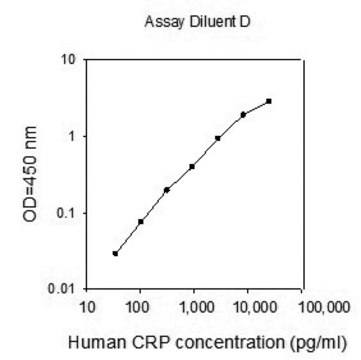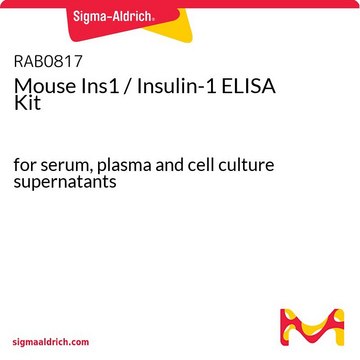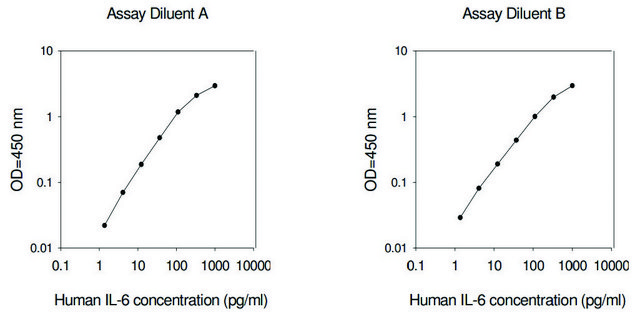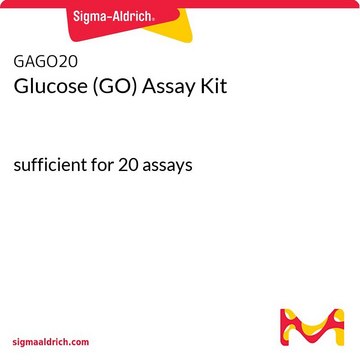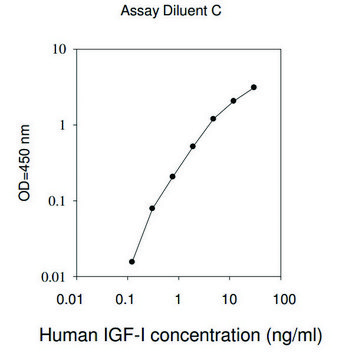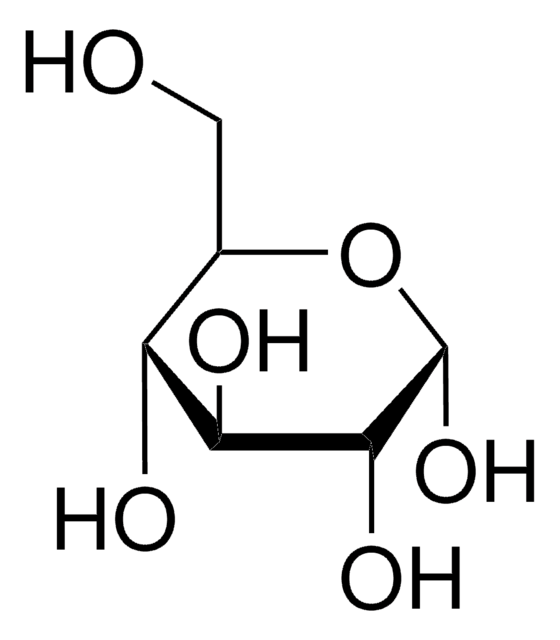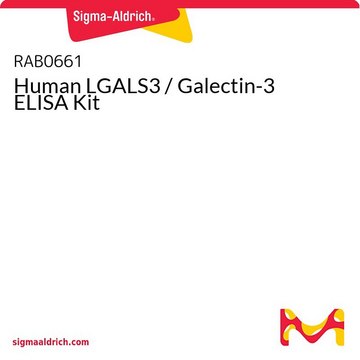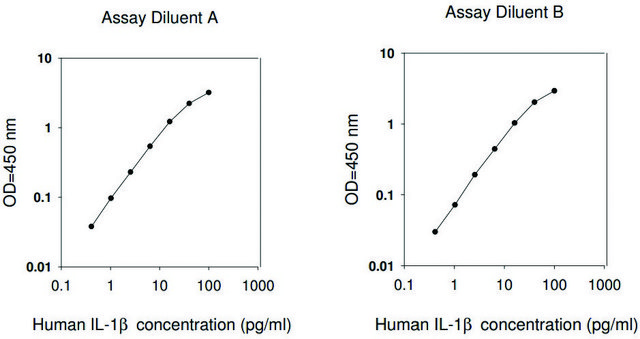RAB0327
Human Insulin ELISA Kit
for serum, plasma, cell culture supernatants and urine
Synonym(s):
Insulin
Sign Into View Organizational & Contract Pricing
All Photos(2)
About This Item
UNSPSC Code:
41116158
NACRES:
NA.32
Recommended Products
species reactivity
human
packaging
kit of 96 wells (12 strips x 8 wells)
technique(s)
ELISA: suitable
capture ELISA: suitable
input
sample type plasma
sample type serum
sample type cell culture supernatant(s)
sample type urine
assay range
inter-assay cv: <12%
intra-assay cv: <10%
sensitivity: 4 μIU/mL
standard curve range: 4.69-300 μIU/mL
detection method
colorimetric
shipped in
wet ice
storage temp.
−20°C
Gene Information
human ... INS(3630)
General description
The Human Insulin ELISA (Enzyme-Linked Immunosorbent Assay) kit is an in vitro enzyme-linked immunosorbent assay for the quantitative measurement of human Insulin and Proinsulin in serum, plasma, cell culture supernatants and urine.
Immunogen
Recombinant Human Insulin
Application
For research use only. Not for use in diagnostic procedures.
Human Insulin ELISA Kit has been used to determine human insulin and pro-insulin concentration in serum and HAMECs (human adipose microvascular endothelial cells) which were isolated from human visceral fat of nondiabetic patients.
Please refer to the attached General ELISA KIT Procedure (sandwich, competitive & Indirect ELISA)
Human Insulin ELISA Kit has been used to determine human insulin and pro-insulin concentration in serum and HAMECs (human adipose microvascular endothelial cells) which were isolated from human visceral fat of nondiabetic patients.
Please refer to the attached General ELISA KIT Procedure (sandwich, competitive & Indirect ELISA)
Human Insulin ELISA Kit has been used:
- to measure the blood levels of human insulin and proinsulin in the transgenic mice
- to measure serum insulin indaibetic rats
- to measure insulin in Multiple Sclerosis patients
Biochem/physiol Actions
Insulin is responsible for two types of actions, excitatory and inhibitory. In its excitatory role, it increases the uptake of glucose and lipid synthesis, and in its inhibitory role it inhibits glycogenolysis, gluconeogenesis, lipolysis, proteolysis and ketogenesis. Insulin plays a vital role in regulation of blood glucose level within the normal range. Abnormal insulin secretion leads to various disorders such as diabetes, hyperglycemia or hypoglycemia. Type I diabetes is a result of autoimmune destruction of β cells of pancreas, which leads to depletion of insulin. Mutant INS-gene Induced Diabetes of Youth (MIDY) syndrome is an autosomal dominant disorder caused by missense mutations, which lead to aberrant proinsulin folding. Impaired glucose tolerance (IGT) or non-insulin-dependent diabetes mellitus (NIDDM) is caused by resistance to insulin-stimulated glucose uptake.
Other Notes
A sample Certificate of Analysis is available for this product.
Please type the word sample in the text box provided for lot number.
Please type the word sample in the text box provided for lot number.
Kit Components Also Available Separately
Product No.
Description
SDS
recommended
Product No.
Description
Pricing
related product
Product No.
Description
Pricing
Signal Word
Warning
Hazard Statements
Precautionary Statements
Hazard Classifications
Met. Corr. 1
Storage Class Code
8A - Combustible corrosive hazardous materials
Regulatory Information
常规特殊物品
含少量动物源组分生物产品
Choose from one of the most recent versions:
Already Own This Product?
Find documentation for the products that you have recently purchased in the Document Library.
Production of recombinant human proinsulin in the milk of transgenic mice.
Qian X
Scientific Reports, 4:6465 (2014)
Bo Liu et al.
Molecular medicine reports, 24(1) (2021-05-14)
The present study sought to elucidate the role of Polygonatum sibiricum F. Delaroche polysaccharide (PSP) in high‑fat diet (HFD)‑induced mouse obesity and investigated the primary molecular mechanism underlaying these effects. An obese mouse model was established by feeding HFD and
Xi Qian et al.
Scientific reports, 4, 6465-6465 (2014-10-01)
There is a steady increasing demand for insulin worldwide. Current insulin manufacturing capacities can barely meet this increasing demand. The purpose of this study was to test the feasibility of producing human proinsulin in the milk of transgenic animals. Four
Production of recombinant human proinsulin in the milk of transgenic mice
Qian X, et al..
Scientific Reports, 4, 6465-6465 (2014)
The Interplay between Inflammation and Metabolic Disturbances in Multiple Sclerosis
El-Malkey NF, et al.
Life Science Journal (2016)
Our team of scientists has experience in all areas of research including Life Science, Material Science, Chemical Synthesis, Chromatography, Analytical and many others.
Contact Technical Service
